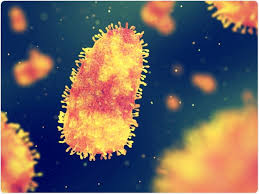Please click the frequently asked questions below for further information and IPC precautions required:
-
What is Rabies?
The rabies virus is a member of the family of Rhabdoviridae.
Rabies is almost always fatal with death resulting from respiratory paralysis. Early intervention, including vaccination.

-
How does it spread?
The most common mode for rabies transmission is from virus-laden saliva of an infected animal. Rabies is spread by mammals, such as dogs, bats, raccoons and foxes. In the UK, it’s only found in some bats.
You can get rabies if:
- you’re bitten or scratched by an infected animal
- an infected animal licks your eyes, nose or mouth, or you have a wound that’s licked by an infected animal
Person to Person spread of Rabies is extremely rare.
Rabies is found throughout the world, but it’s very rare in the UK. Although the risk of getting it while travelling is small, rabies is more common in parts of:
- Asia
- Africa
- Central and South America
-
What are the symptoms of Rabies?
Early symptoms may include:
- Paraesthesia around the site of the wound (a burning or prickling sensation)
- Fever
- Headache
- Malaise
The disease may then present in later stages with:
- Hydrophobia
- Hallucinations
- Maniacal behaviour
- Progressing to paralysis and coma
- Or as an ascending flaccid paralysis and sensory disturbance.
Rabies is almost always fatal with death resulting from respiratory paralysis. Early intervention, including vaccination, is essential to prevent progression to later stages of infection.
-
Why is this important?
If NIAS staff are aware that the patient has a suspected or confirmed case this should be communicated to the Control Room (Emergency or Non-emergency as appropriate) and the staff in the receiving unit when transferring the patient to ensure effective patient care and management.
-
IPC Precautions
- Standard Precautions should be used.
- Contact Precautions should be used if there is a higher risk of contact with blood and body fluids.
- Hand Hygiene should be completed as per the 5 moments in line with usual practice.
- Eye protection should be risk assessed for any concern regarding a splash risk.
- Gloves and Aprons should be risk assessed and worn if contact with the patient’s blood or bodily fluids.
- Laundry should be treated as per usual policy unless contaminated with blood or body fluids.
-
What cleaning is required?
All equipment and the ambulance should have an in-between patient clean, paying particular attention to touch points.
-
Do staff need prophylaxis or follow up?
No staff follow up required.




